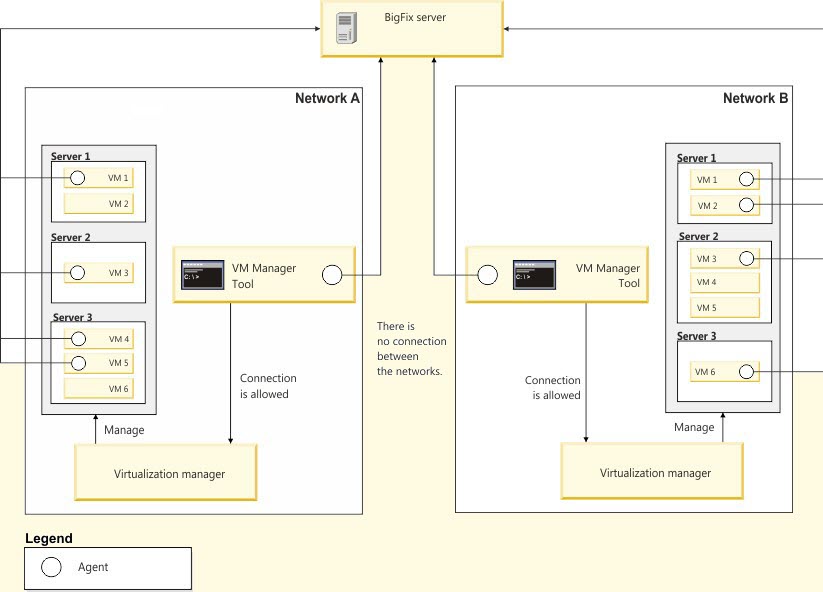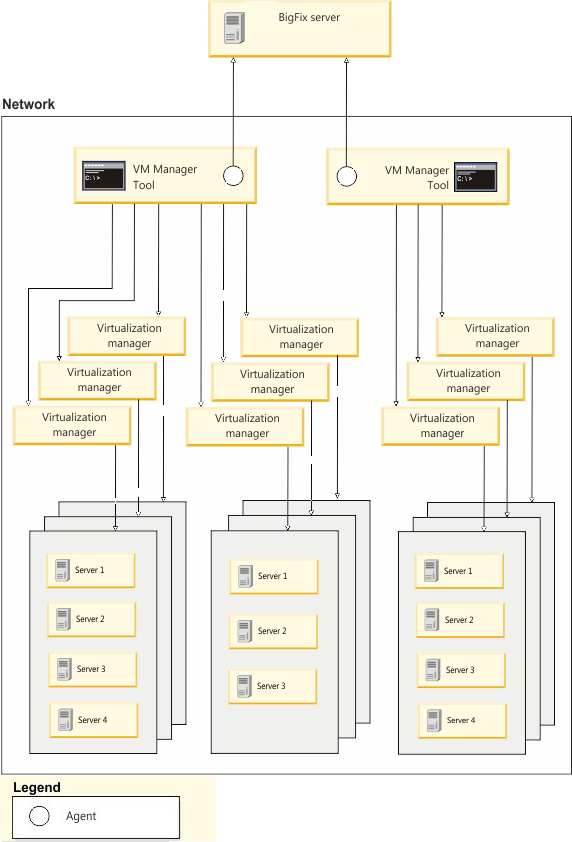Deployment scenarios
Before you proceed to advanced VM management, review the available scenarios for which you can use the additional instance of VM Manager Tool. The main purpose is to transfer the capacity data from VM managers that are in separated networks, but you can also balance the network traffic, or filter your virtual machines based on their UUIDs.
Scenario 1: A VM manager is in a separated network and cannot connect to BigFix
Without a direct connection to BigFix, data about capacity of VM Managers cannot be collected, which conflicts with license compliance. If you have a separated network in your environment, you can use VM Manager tool that serves as a connector between VM Managers and the server. The tool can be installed on any computer that can connect to VM Managers. It gathers data about their capacity and then uploads it to the server.
The following image shows two separated networks, each represented by a different VM Manager tool.

Scenario 2: You want to balance the network traffic coming from multiple VM Managers
You can balance the network traffic by distributing it between multiple VM Manager Tools. Successful load balancing optimizes resource use, maximizes throughput, minimizes response time, and avoids overload.
The following image shows two VM Manager Tools connected to the BigFix server. Each of them is responsible for gathering capacity data from different VM Managers.
